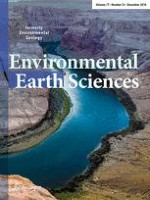01.12.2018 | Original Article
Use of SWAT to determine the effects of climate and land use changes on streamflow and sediment concentration in the Purna River basin, India
Erschienen in: Environmental Earth Sciences | Ausgabe 23/2018
EinloggenAktivieren Sie unsere intelligente Suche, um passende Fachinhalte oder Patente zu finden.
Wählen Sie Textabschnitte aus um mit Künstlicher Intelligenz passenden Patente zu finden. powered by
Markieren Sie Textabschnitte, um KI-gestützt weitere passende Inhalte zu finden. powered by
